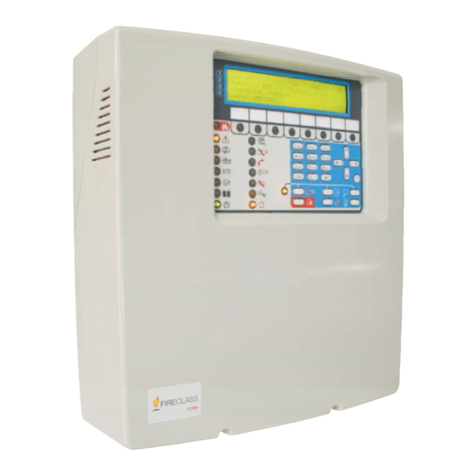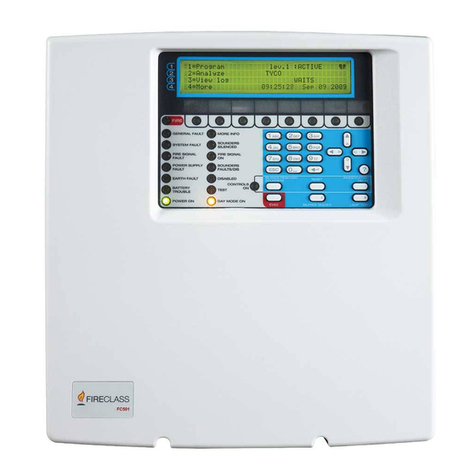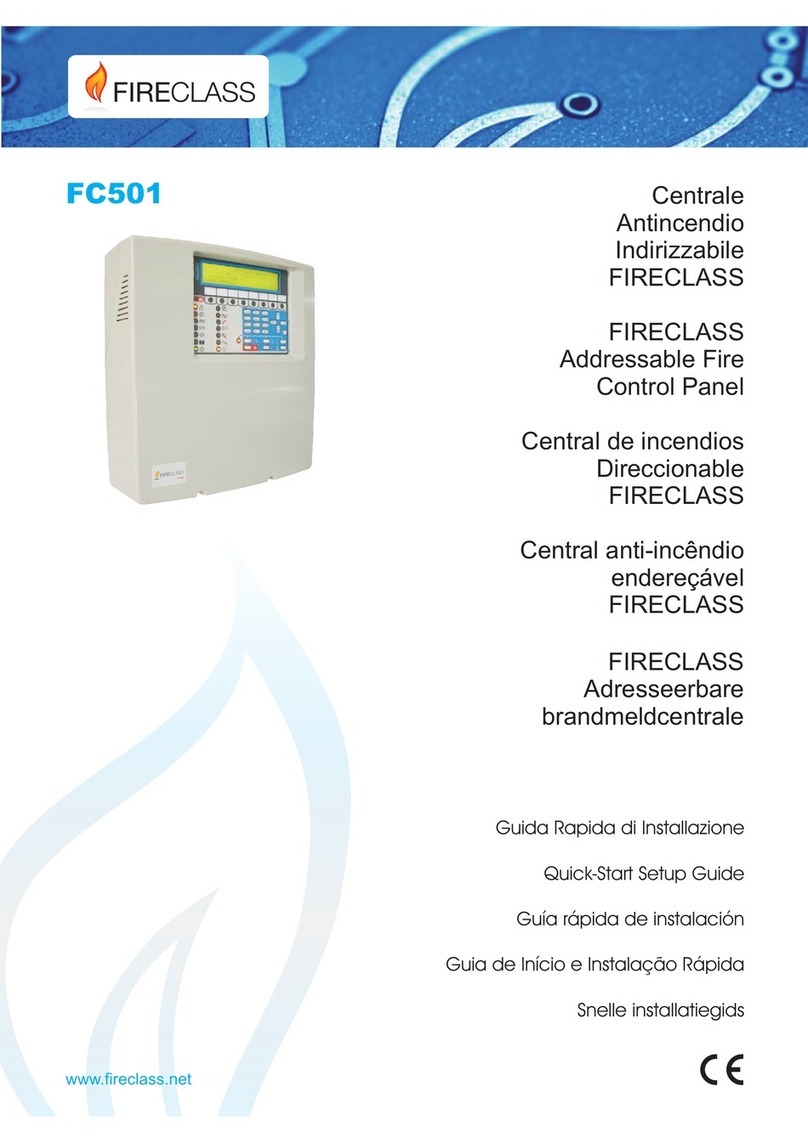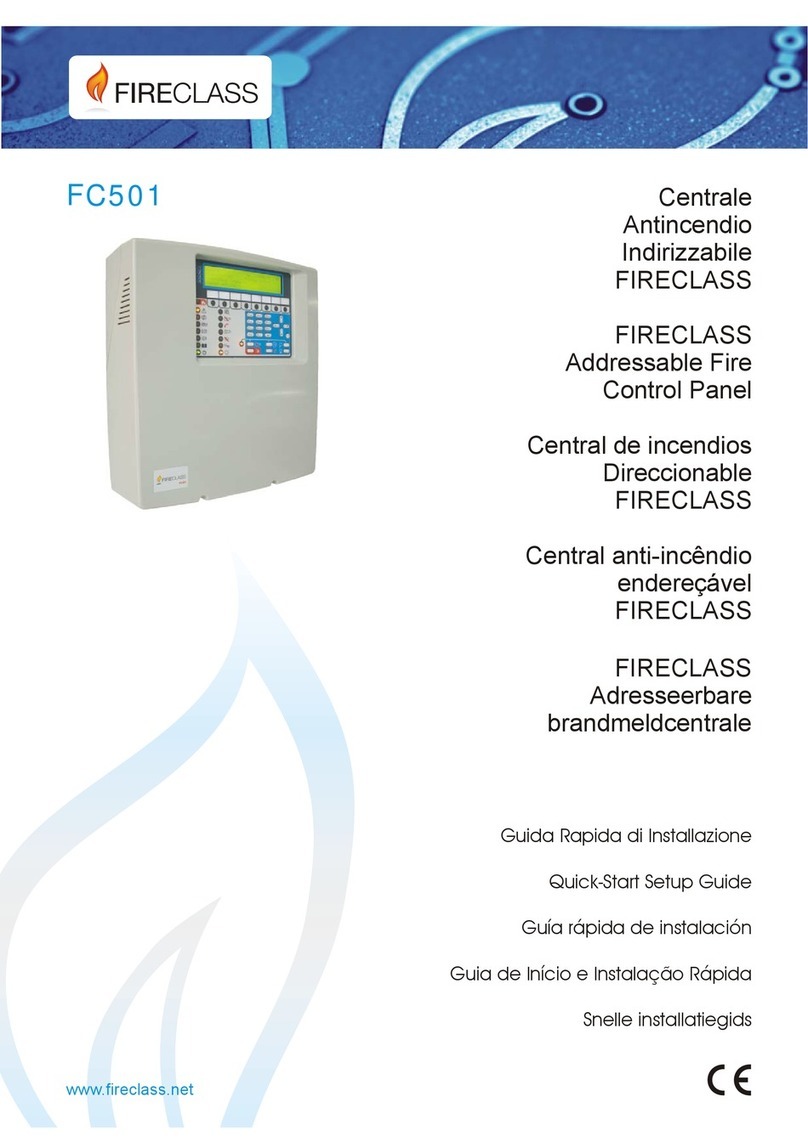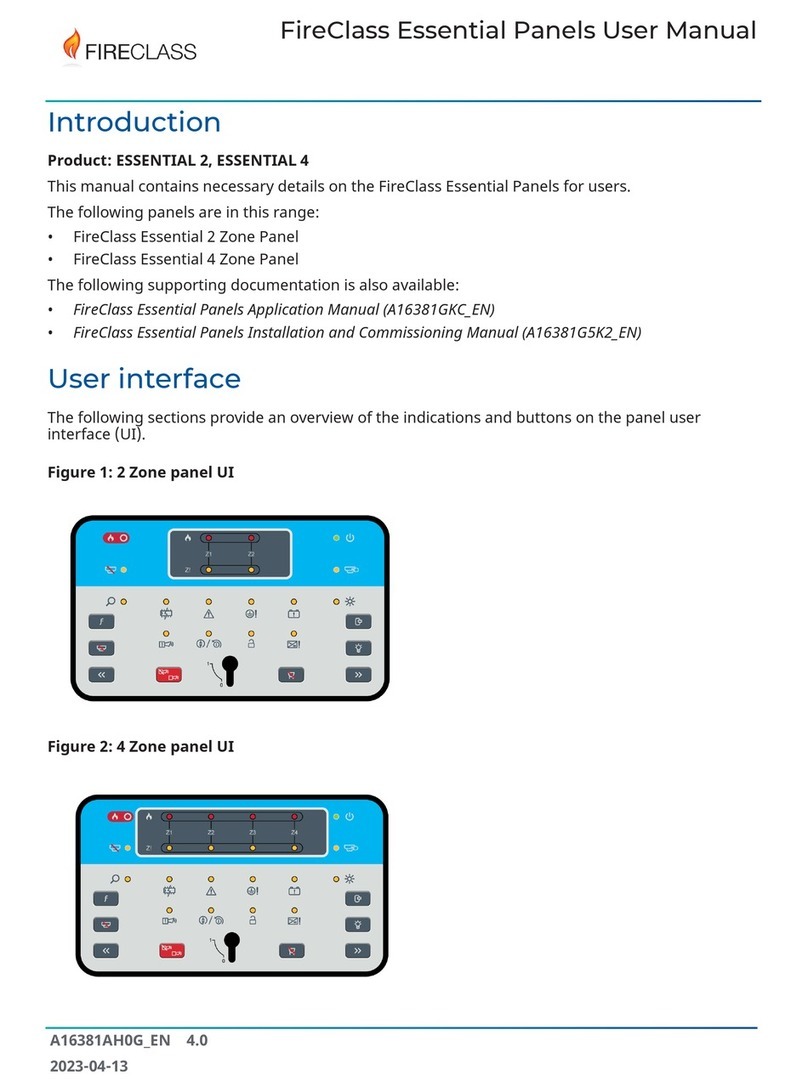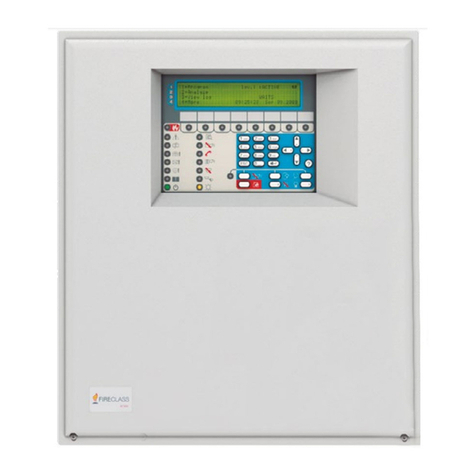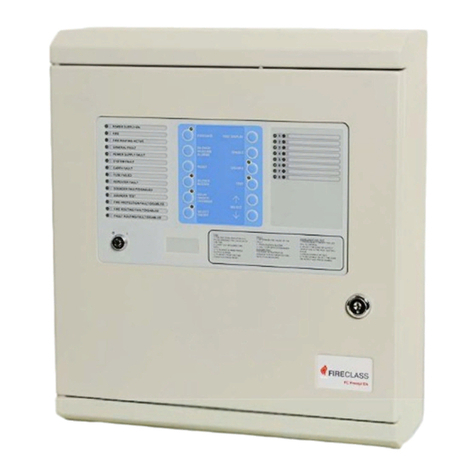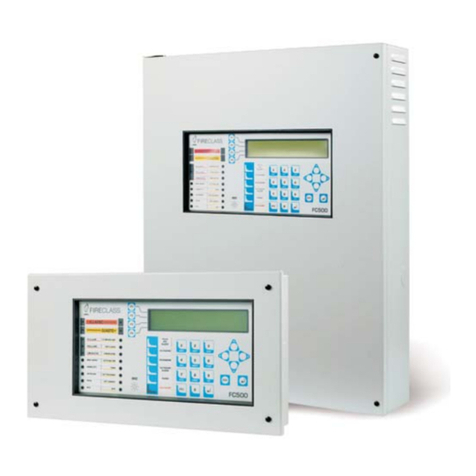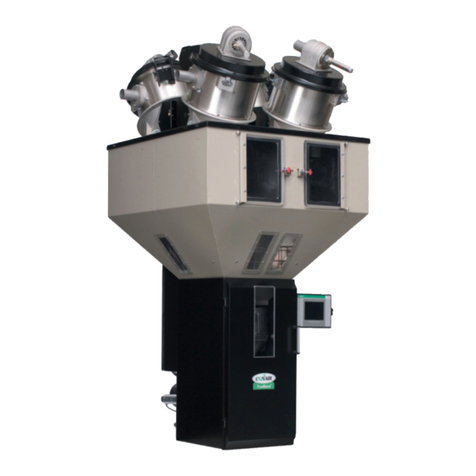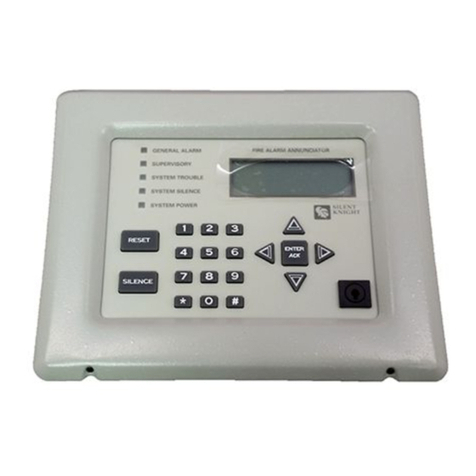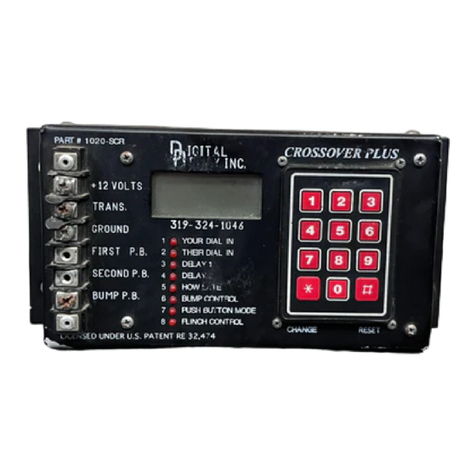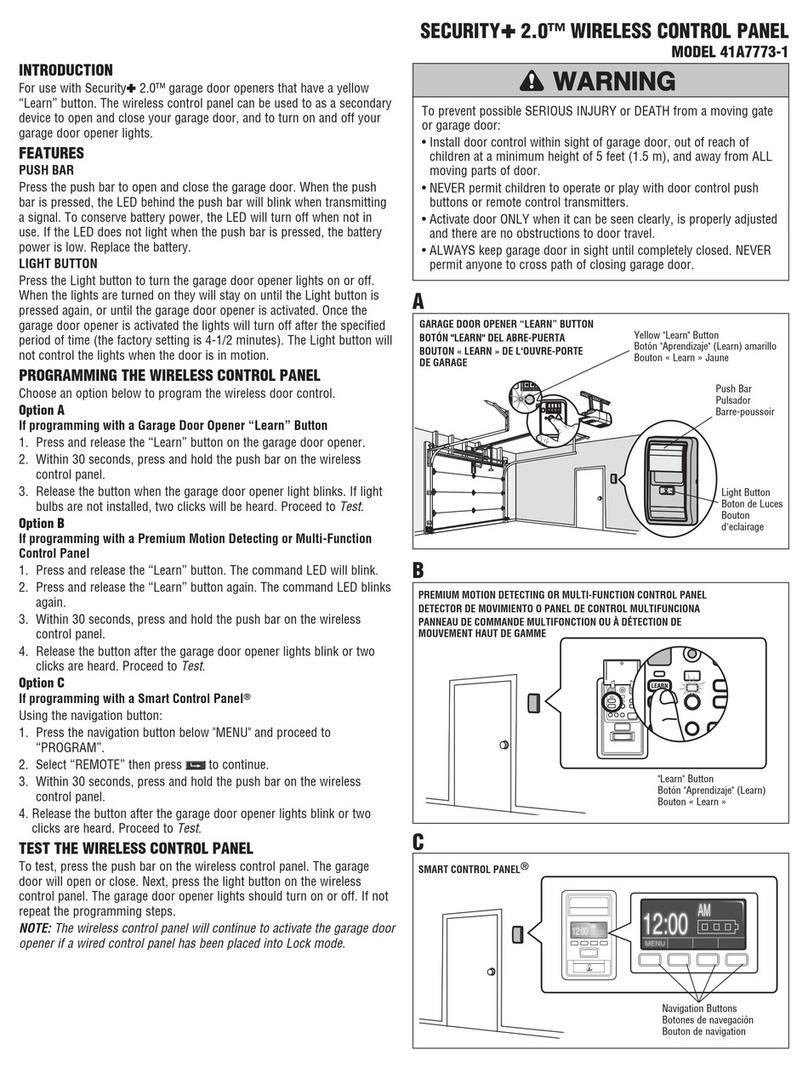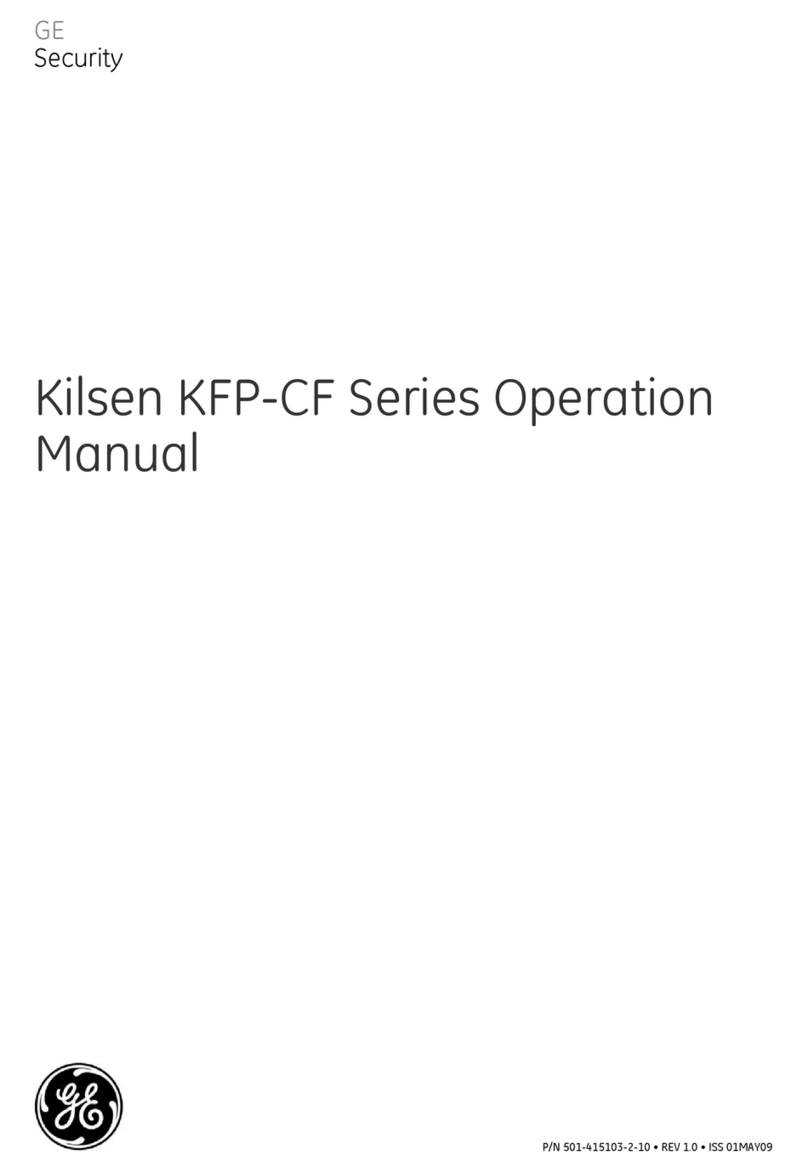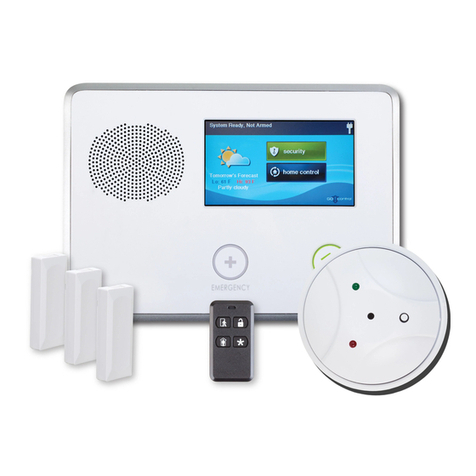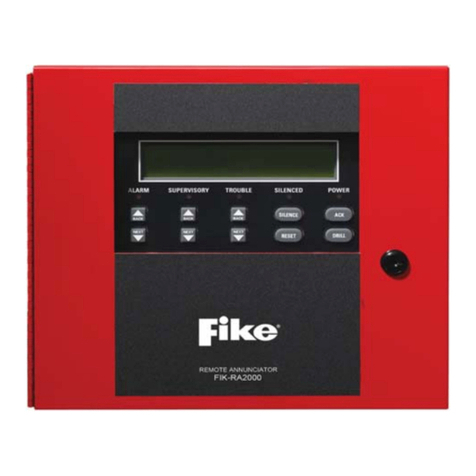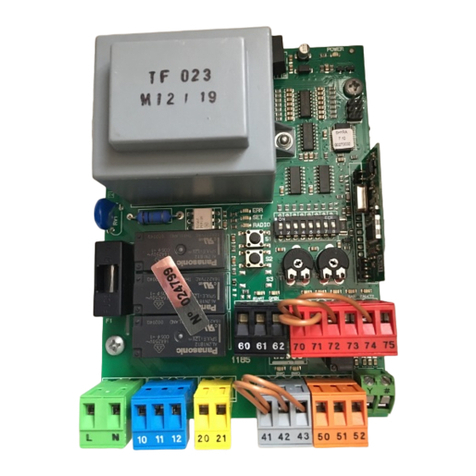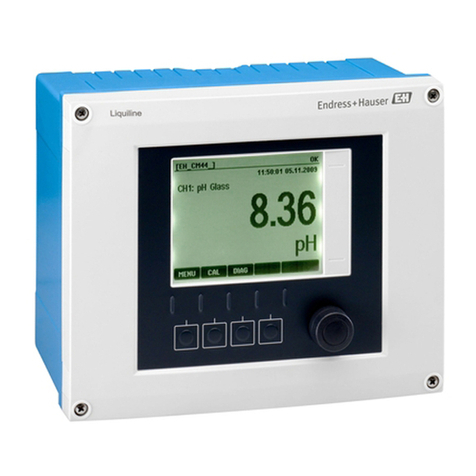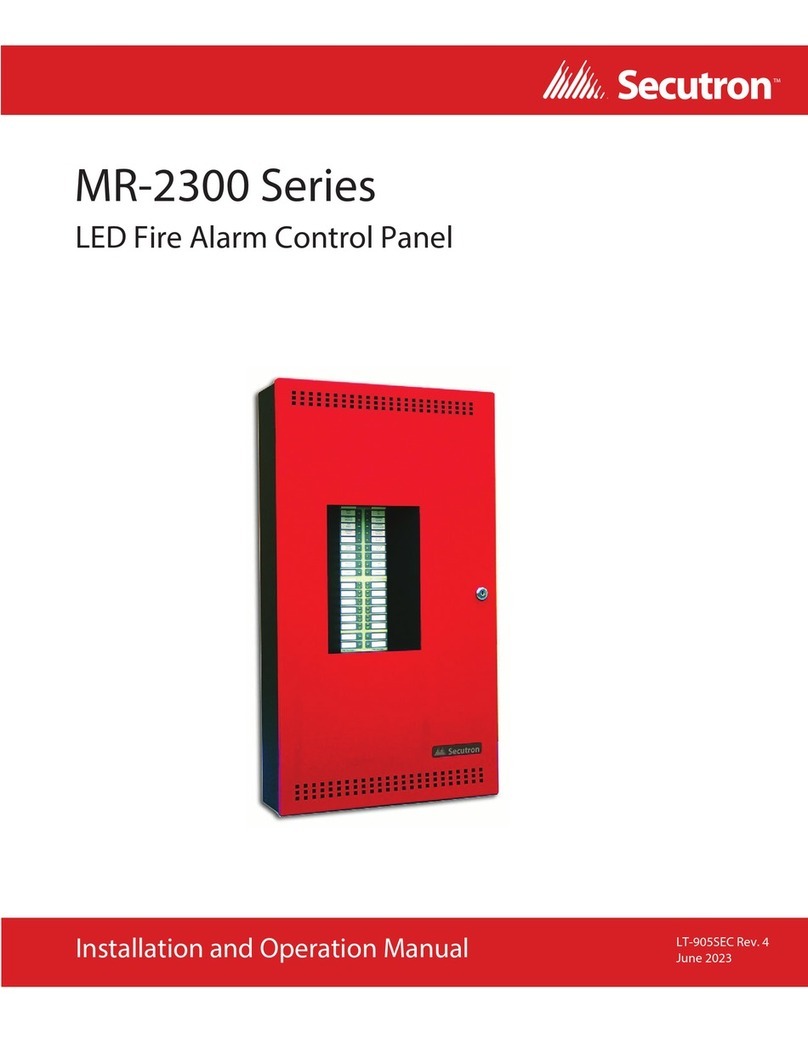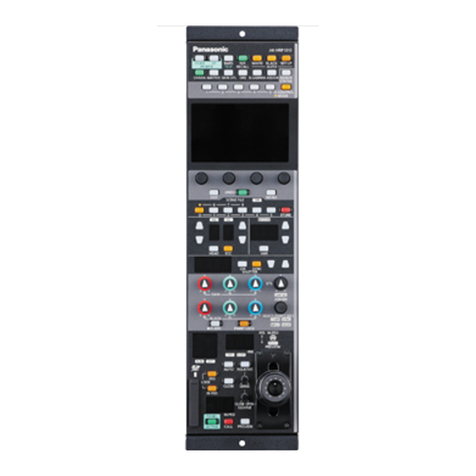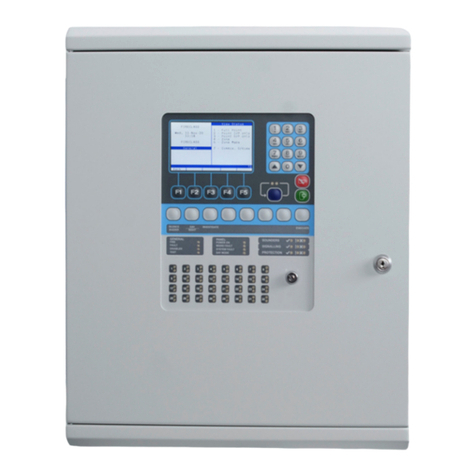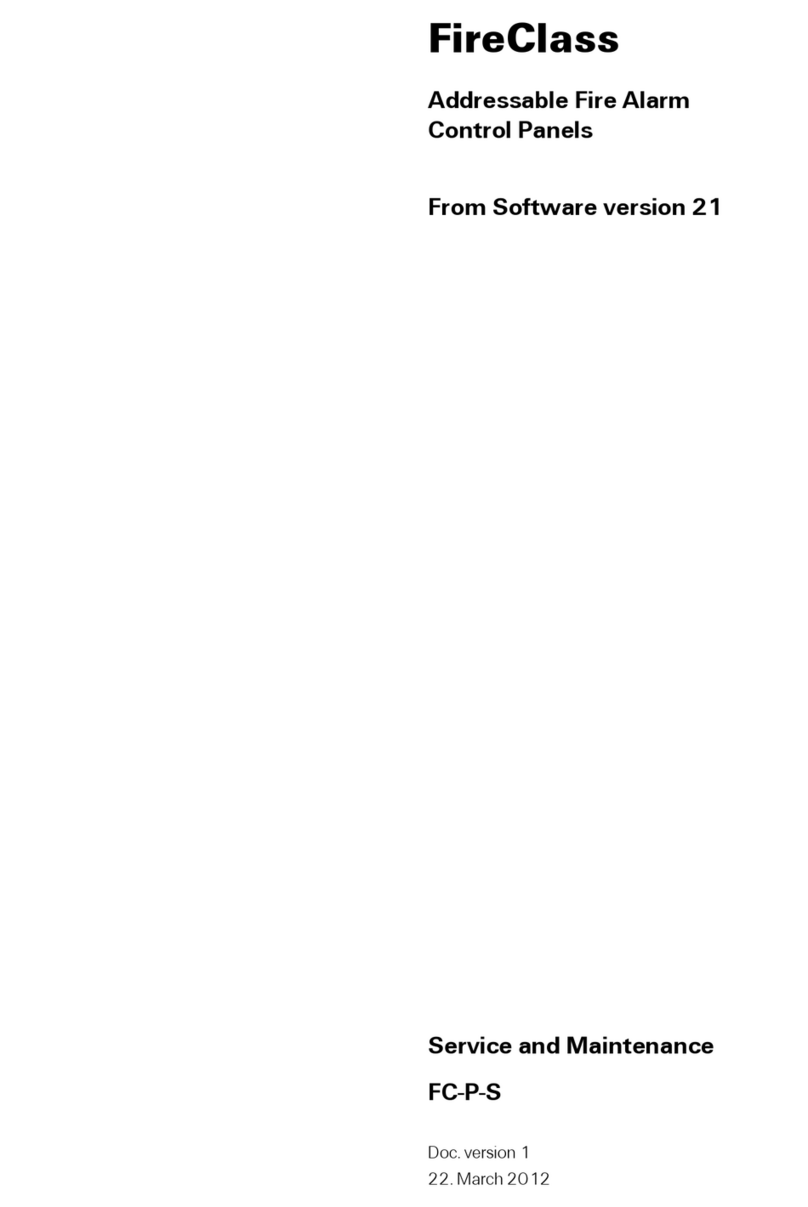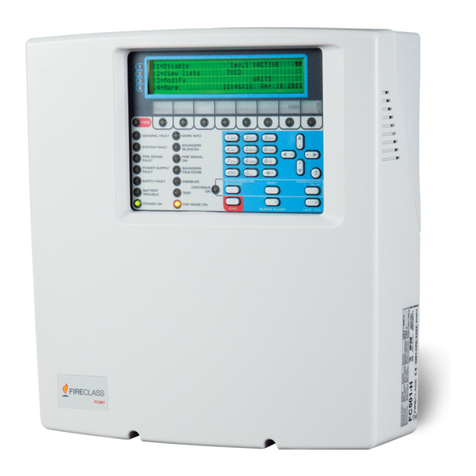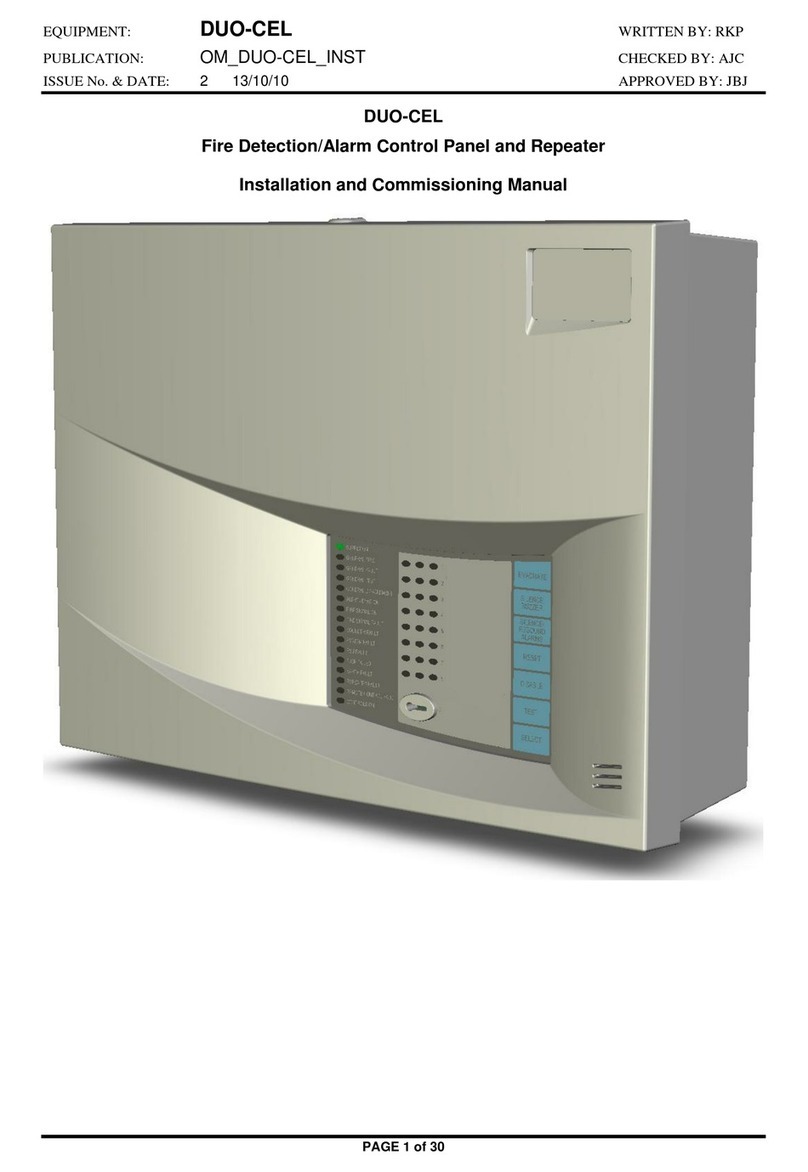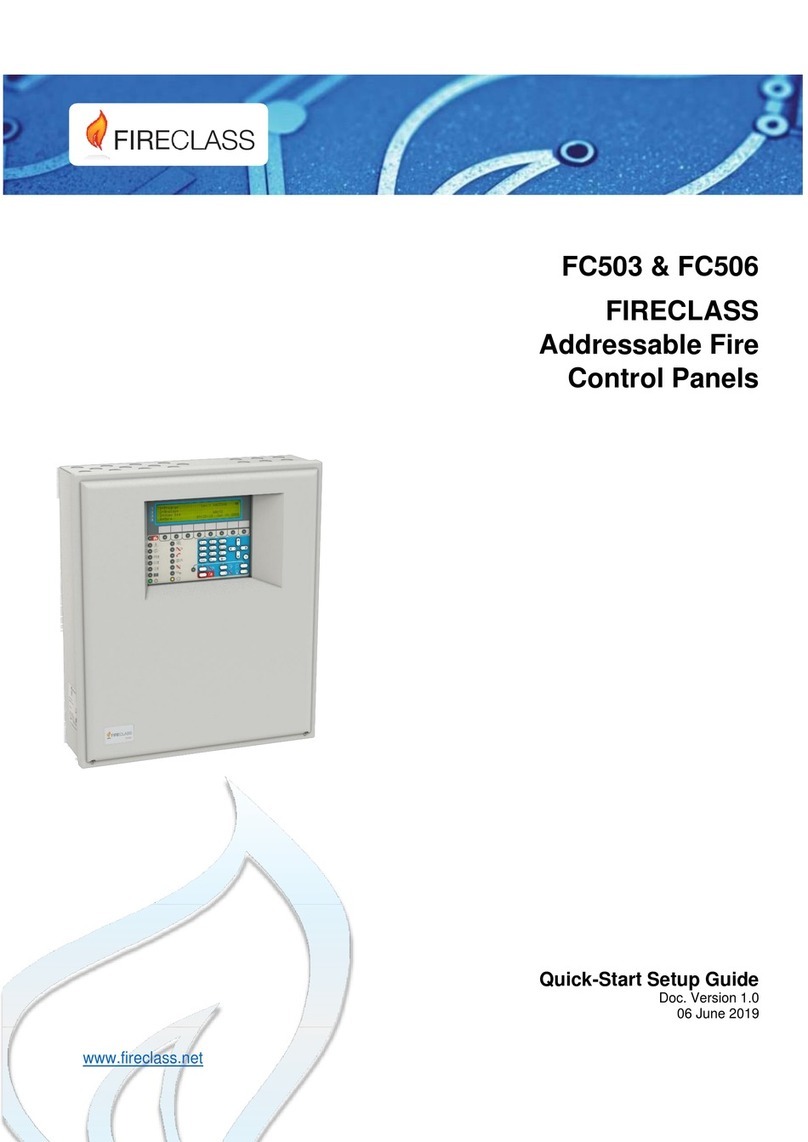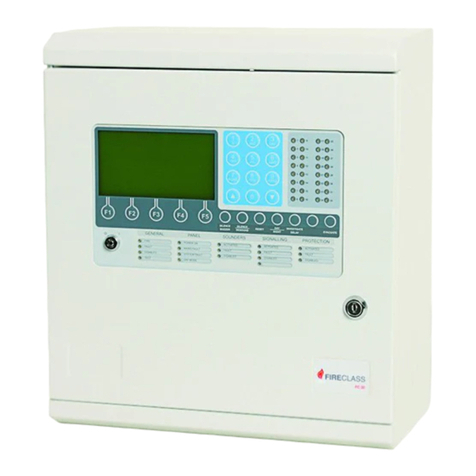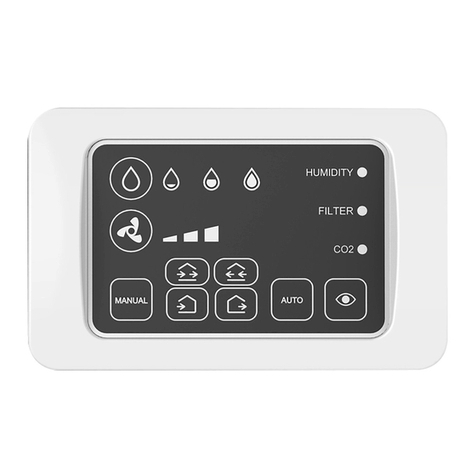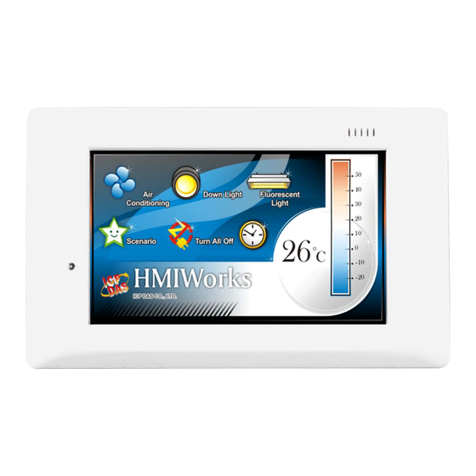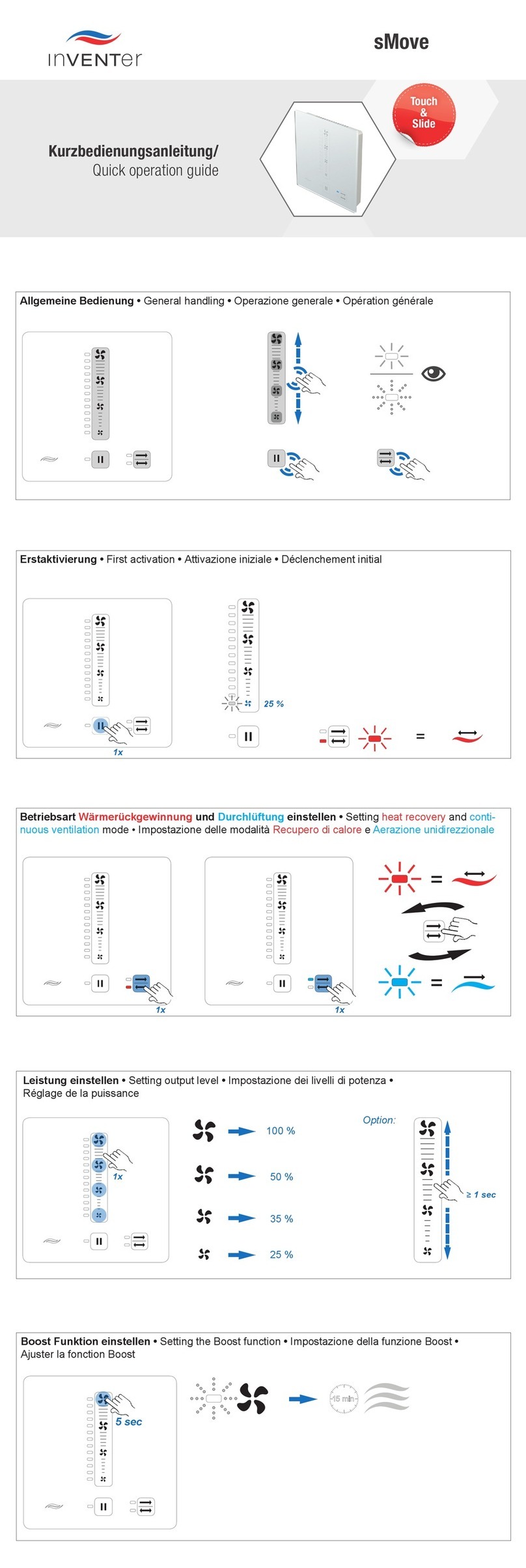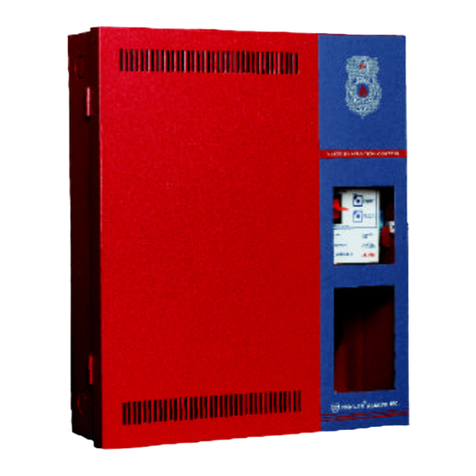
20
only with the FC503_FC506 software.
During standby status, terminal [C] closes to terminal
[NC].
In the event of fire, terminal [C] closes to terminal
[NO].
Note: EN54-2 certification applies only when the fire
output is not C or J or G (EN 54-1) type. Therefore, you
must not use this output to manage fire alarm devices, fire
or fault transmission devices, or an automatic fire alarm
system.
Fault
[NC][NO][C]
This is a non-supervised fault output; a dry contact relay
for non-supervised devices.
The fault output activates when:
The first fault event occurs.
In the case of logic fault.
In the case of total loss of power.
Other features of this fault output include:
Deactivation of this fault occurs during the panel reset.
It is not possible to silence the fault output.
It is not possible to disable the fault output.
The fault output may not be programmed to work
differently.
During standby status, terminal [C] closes to terminal
[NC].
In the event of fault, terminal [C] closes to terminal
[NO].
Note: EN54-2 certification applies only when the fault
output is not J (EN 54-1) type. Therefore, you must not use
this output to manage fault transmission devices.
SC1, Sounder circuit
This sounder circuit is a supervised, silenceable,
bypassable or disabled bell output for the alarm signaling
devices. Terminals for the connection of devices that are
activated with the positive 24V must be supervised.
During standby status, negative pull-down to 0 V on [+]
terminal; positive pull-up to 27.6 V on the [–] terminal.
When control panel is in alarm status, positive pull-up to
27.6 V on the [+] terminal; negative pull-down to 0 V on the
[–] terminal.
Silence the SC1 using the menu command DISABLE.
Note: You cannot program this output, it activates every
time the control panel goes into ALARM status.
SC2, Sounder circuit
This sounder circuit is a supervised, silenceable,
bypassable or disabled programmable bell output, for the
panel alarm signaling or panel delay to alarm or panel
warning or panel fault or 1,2,3 or 4 software zones(OR)
alarm, or 1,2,3 or 4 software zones(OR) warning or 1,2,3
or 4 software zones (OR) fault or 1,2 or 3 points(OR) alarm
or 1,2 or 3 points(OR) delay to alarm or 1,2 or 3
points(OR) warning or 1,2 or 3 points(OR) fault.
During standby status, negative pull-down to 0 V on[+]
terminal; positive pull-up to 27.6 V on the [–] terminal.
When a programmed event occurs, positive pull-up to
27.6 V on the [+] terminal, negative pull-down to 0 V onthe
[–] terminal.
You can force the SC1 and SC2 outputs to standby by
resetting the control panel. The SC outputs hold standby
status for the programmed silence time. If alarm conditions
are present when the programmed silence time expires for
the SC1 or another programmed event for the SC2, they
reactivate.
Notes:
SC1, SC2 accept devices that operate within
SELV limits only.
The SC2 output, if programmed as SC1, is type C.
If using a 2-wire connection loop, the EN54-2
certification only applies when the total number of
devices, including detectors and manual
callpoints, does not exceed 32.
Auxiliary outputs
OC1-OC2
These outputs are silenceable, bypassable or disabled,
unsupervised and programmable. These are open-
collector terminals for the panel alarm signaling (default) or
panel delay to alarm or panel warning or panel fault or
1,2,3 or 4 software zones(OR) alarm, or 1,2,3 or 4
software zones(OR) delay to alarm, or 1,2,3 or 4 software
zones(OR) warning or 1,2,3 or 4 software zones(OR) fault
or 1,2 or 3 points(OR) alarm or 1,2 or 3 points(OR) delay
to alarm or 1,2 or 3 points(OR) warning or 1,2 or 3
points(OR) fault, which will be close to ground, when the
connected event becomes active, and will remain in this
state until the generating event has ended (so after a
manual reset or a fault re-store).
You can program the output OC1 to signal the telephone
line failure so it can combine with a relay, for switching
from the primary phone line to the reserve line.
You can also force the OC1 and OC2 outputs to standby by
resetting the control panel.
The OC1 and OC2 outputs activate with a delay equal to
the delay to alarm time when the programmed event
occurs.
Note: EN54-2 certification applies only when OC1 and
OC2outputsare notC orJor G,EN 54-1 type. Therefore,
do not utilize this output to manage the fire alarm device or
fire or fault transmission devices or automatic fire alarm
system.
24R [GND]
Resettable auxiliary power supply to devices that operate
at 24 V, 1A max powered by the following standby
batteries:
Positive (27.6 V) on terminal [24R];
Negative on terminal [GND].



















